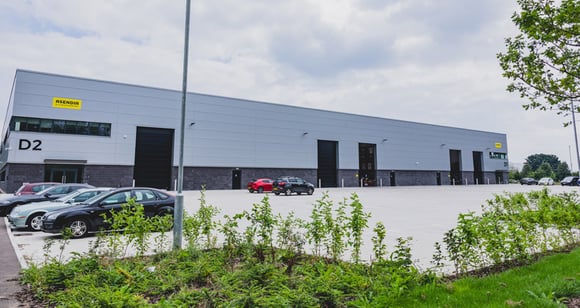Preparing your business for e-commerce is essential. It's predicted that 2.05 billion people will be shopping online in 2020 – that's 26.28% of the world's population. These figures may have significantly increased in light of the global pandemic. Buyers looking for convenience, variety, and quality are empowered by the internet to make more astute purchasing decisions. To keep up with trends and ensure that your business continues to thrive in this evolving market, you should have a solid e-commerce strategy in place. Let's take a closer look at what that means.
Know your target audience
Customers are at the heart of every business decision you make; therefore, understanding their needs and concerns is essential when formulating your e-commerce strategy.
How to profile your buyers:
- Do they have sufficient income to spend on your product?
- What are their delivery expectations?
- Where do they gather information online?
- When do they do their online shopping?
- What devices do they use to browse and purchase online?
These are just some of the questions you should be asking when shaping up your ideal buyer personas. Once you know your audience, you can design an e-commerce strategy that addresses their needs.
Improve user experience (UX) on your website
Your website is, essentially, your shop window. An unattractive, outdated, hard-to-navigate website won't generate the desired interest from your customers. Just like a gloomy physical storefront with old, sunbleached stock wouldn't entice passers-by on the high street.
Online shopping has been around long enough for buyers to develop a certain level of expectation when it comes to the UX they encounter on a website. In order to remain competitive, you have to ensure that your website functions optimally.
Top UX tips for your website:
- Ensure smooth navigation.
- Quick page loading time.
- Have an efficient search tab.
- Enable autocomplete where applicable – think address tabs, product search tabs.
- Display good quality images of your products.
- Include comprehensive product descriptions that are formatted to highlight the features and benefits.
- Personalise the homepage for the user – display products that match their previous purchases or suggest offers on products they may like.
- Have a secure checkout that makes adding, removing, adjusting quantity, and paying for goods easy.
- Make your branding visible throughout the website.
- Optimise the website for desktop and mobile.
Have a differentiator
It's no secret that e-commerce is competitive. Start-up costs can be relatively low when compared with brick and mortar retailers, making it easier for competitors with bigger budgets to jump in your arena and pose a threat.
Customers have an abundance of choice online; how you make your brand stand out makes all the difference in your e-commerce strategy.
Perhaps your company's ethical commitments appeal to consumers' sustainability concerns; be sure to shout about that on your website. Is your product of superior quality made with exceptional craftsmanship? Highlight that in your images, descriptions, and content. Maybe your customer service team offers outstanding support; show your website visitors how you go above and beyond for customers by sharing testimonials and reviews on your website.
Find out what you do better and make it a clear selling point.
Use chatbots
Artificial Intelligence (AI) technologies are no longer a futuristic concept. Businesses are increasingly leveraging the power of automation and smart tools to optimise their services. You can study a customer's behaviour on your website and then apply algorithms that can present the most suitable solutions to their problems.
Chatbots are a highly popular feature that many e-commerce websites are taking advantage of. They enhance the customer experience by offering a 24/7 communication portal between your organisation and the buyer – even if your customer service team is in a different time zone and cannot deal with the query in person.
A chatbot can gather valuable information from your visitors so your sales team can call them back with the right solution during working hours. Alternatively, the chatbot can automatically resolve issues by referring the customer to the relevant section of your FAQ page.
Such features are essential as your product range grows in depth and complexity. You can, to a degree, use the chatbot to get around language barriers and grow your business without prematurely scaling your human customer service team to handle high volumes of common queries.
Pick an excellent logistics partner
A seamless experience, from checkout to delivery, is non-negotiable in the current online shopping market. Your customers, domestic and international, are looking for fast turnaround times on deliveries and returns.
Offering a range of convenient delivery and tracking options to your buyers is essential for building trust and showing customers that you are a reliable vendor.
When studying your target audience, find out what their priorities are when it comes to receiving goods. Would they like next day deliveries and are they willing to pay for the extra cost? Would they prefer to pick up the item from a safe location?
If your products are dispatched by a third party fulfilment partner, check that your e-commerce platform can integrate with their warehouse system so that you can keep updated on stock levels and outgoing products, as well as returns.
You need peace of mind that your goods are being packaged adequately, labelled correctly, and sent to your customer using the most reliable and cost-effective couriers.
At Asendia, we pride ourselves on being world leaders in e-commerce order fulfilment. We are trusted by well known international online brands to expertly distribute parcels directly to customers. We can manage your orders, facilitate transactions, deliver goods, and handle your returns. Businesses of all sizes depend on us for a full suite (or a custom range) of services that help them optimise not only their e-commerce strategies but also build profitable businesses that scale efficiently.





